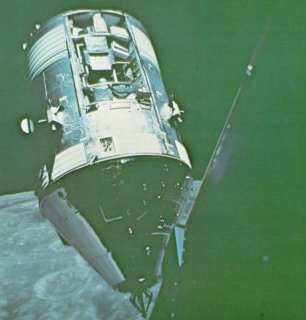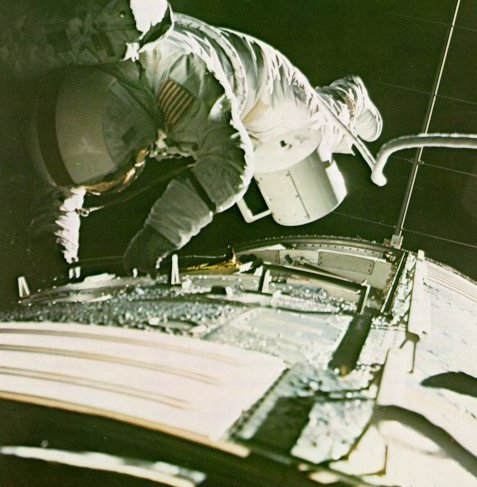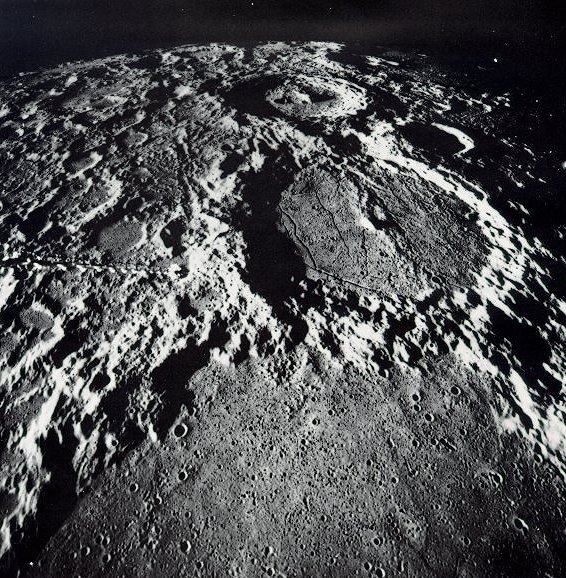Apollo Expeditions to the Moon
A MAJOR THERMAL EVENT?
The last crystallization age of some of the Apollo 16 rocks
appeared to be about 3.9 billion years, and continued to indicate
that this age is a major turning point in lunar history. This
general age for the cooling of highland-like materials also was
found to hold for the ejecta blanket of the Imbrium Basin at Fra
Mauro, for the rocks of the Apennines, and later for some of the
highland rocks at Taurus-Littrow. This limit suggested (1) a
major thermal event associated with the formation of several
large basins over a relatively short time, or (2) a major thermal
event associated with the formation of the light-colored plains,
or (3) the rapid cessation of the period of major cratering that
continually reworked the highlands until most vestiges of
original ages had disappeared and only the last local impact
event was recorded. As we attempt to explain the absence of very
old rocks on Earth, we should not forget these possibilities for
resetting our own geologic clocks.

|
The eyes of geochemical sensors peer through an opening
in the sides of Apollo 15 CSM Endeavour. The instruments
gave us broad-scale remote sensing of the lunar surface,
allowing data from sampies collected on the surface to
be correlated across major areas of the Moon. Included
were precision cameras and spectrometers that sensed x-rays,
gamma rays, infrared radiation, and the chemical ions in the
ultrathin lunar atmosphere. Apollo 15 cameras supplied
much imagery used to plan our Apollo 17 exploration.
|
| | |
Adrift between the Earth and the Moon, Ron Evans retrieved
the film canister of the mapping cameras on the day after
Apollo 17 left lunar orbit. His space walk lasted an hour,
and resulted in the successful retrieval of data from three
experiments. Ron's oxygen was fed from the spacecraft through
the umbilical hose, with an emergency supply on his back.
I was in the open hatch to help in retrieval, which was
necessary because the service module would be jettisoned
before we reentered the Earth's atmosphere.
|
Apollo 16 continued the broad-scale geological, geochemical,
and geophysical mapping of the Moon's crust from orbit begun by
Apollo 15. This mapping greatly expanded our knowledge of
geochemical provinces and geophysical variations, and has helped
to lead to many of the generalizations it is now possible to make
about the evolution of the lunar crust.
Apollo 17 carried Capt. Eugene A. Cernan, Capt. Ronald
Evans, and me in December 1972 to the valley of Taurus-Littrow
near the coast of the great frozen basaltic "sea" of Serenitatis.
The unique visual character and beauty of this valley was, I
hope, seen by most people on television as we saw it in person.
The unique scientific character of this valley has helped to
lessen our sadness that Apollo explorations ended with our visit.
It would have been hard to find a better locality in which to
synthesize and expand our ideas about the evolution of the Moon.
| |
Apollo 17 photographed itself in the frame at right from its panoramic
camera, which shows the valley of Taurus-Littrow after the landing of
Challenger. The landing point (see inset at left) is revealed by
a bright spot, produced by the effects of the descent-engine exhaust.
A reflection from and shadow of the LM are also visible in
high-quality prints. The panoramic camera has an absolute resolution of
about 1 meter in best prints.
Detailed analysis of this panoramic photograph indicates that
the light-colored avalanche, and many of the craters on the valley
floor, are probably the result of the impact of material ejected
some 50 million years ago from the crater Tycho 1300 miles to the
southwest. Such orbital data have been invaluable in expanding the
context of our interpretations of samples and data that were returned
from explorations on the surface.
|
At Taurus-Littrow we looked at and sampled the ancient lunar
record ranging back from the extrusion of the oldest known mare
basalts, through the formation of the fragmental rocks of the
Serenitatis mountain ring, and thence back into fragments in
these rocks that may reflect the very origins of the lunar crust.
We also found and are now studying volcanic materials and
debris-forming processes that range forward from the formation of
the earliest mare basalt surface through 3.8 billion years of
modification of that surface.
The pre-mare events in the Taurus-Littrow region that
culminated in the formation of the Serenitatis Basin produced at
least three major and distinctive units of complex fragmental
rocks. The oldest of these rock units contains distinctive
fragments of crystalline magnesium and iron-rich rocks that
appear to be the remains of the crystallization of the melted
shell. This conclusion is supported by a crushed rock of
magnesium olivine with an apparent crystallization age of 4.6
billion years. The old fragmental rock unit containing these
ancient fragments was intruded and locally altered by another
unit which was partially molten at the time of intrusion about
3.9 billion years ago. Such intrusive fragmental rocks are
probably the direct result of the massive impact event that
formed the nearby Serenitatis Basin; however, an internal
volcanic origin cannot yet be ruled out. The third fragmental
rock unit seems to cap the tops of the mountains and it may be
the ejecta from one of the several large old basins within range
of the valley. This unit contains a wide variety of fragments of
the lunar crust, including barium-rich granitic rock.
| | |
A landing site not visited, the crater Alphonsus is shown
in this Apollo 15 mapping-camera picture. A point near the
right edge of the crater floor in this southward-looking
view was once the leading candidate for our landing site
in Apollo 17. However, the need for greater geologic and
geographic variety resulted in final selection of Taurus-Littrow
instead. Our regret is that both could not have been explored.
|
The valley of Taurus-Littrow and other low areas nearby
appear to be a fortuitous window that exposes some of the oldest,
if not the oldest, mare basalt extrusives on the Moon. They are
about 3.8 billion years old, and are 50 to 100 million years
older than the basalts at Tranquility Base. They also contain
titanium oxide in amounts up to 13 percent by weight.
|





